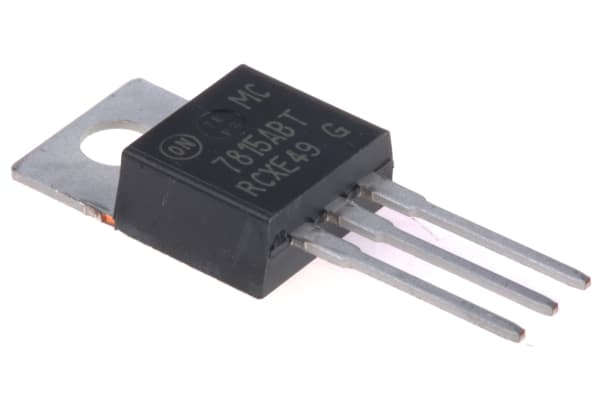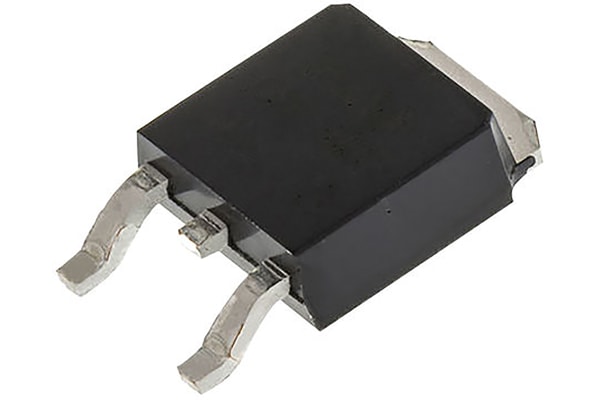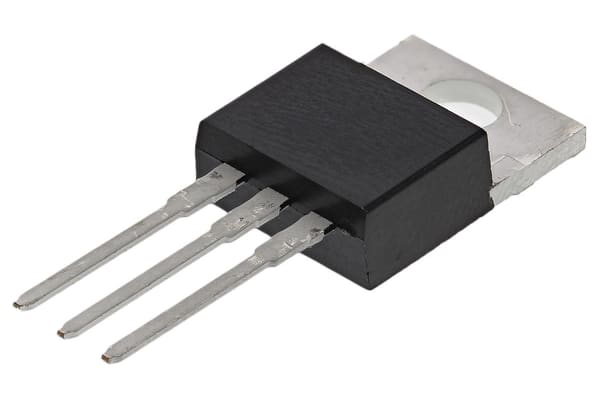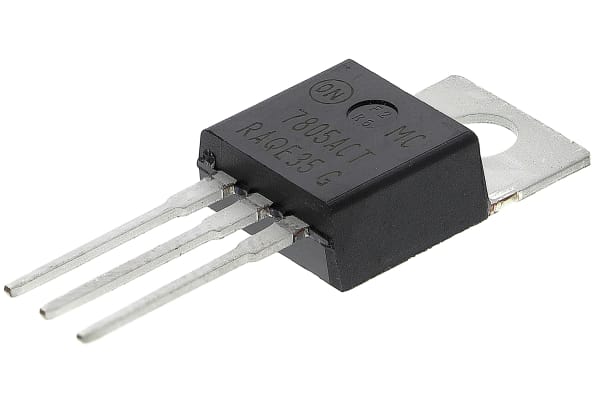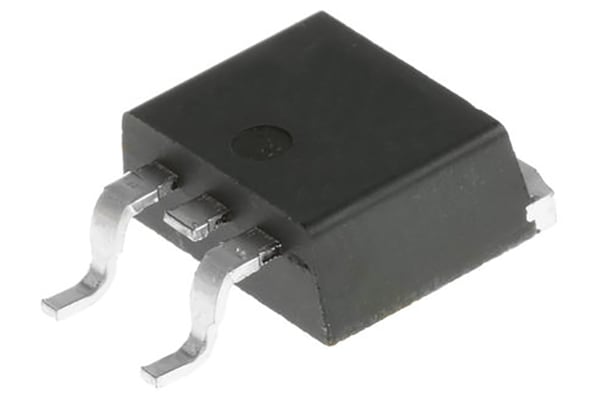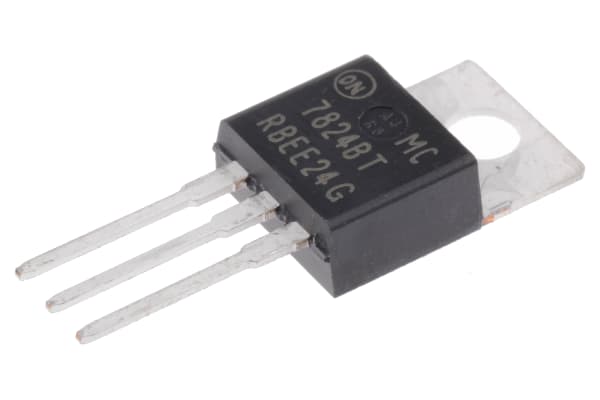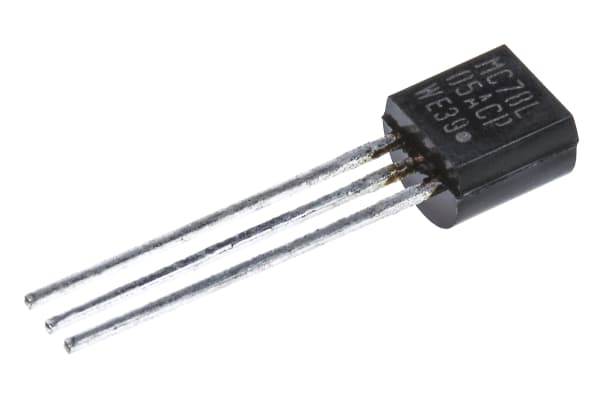Linear Voltage Regulators
A Linear Voltage Regulator ensures the output voltage from the circuit is maintained at a specific voltage. The device acts as a variable resistor, continuously adjusting to maintain a constant output voltage. The regulated voltage must be lower than the input voltage. Simple voltage regulator contains a Zener Diode and a resistor but more complicated versions include elements like a voltage reference and error amplifiers.A more specific type of regulator are Low Dropout Voltage Regulators (LDO) which can regulate voltage even when the power supply voltage is very close to the supply voltage.How to choose linear voltage regulator ICs?The primary feature in choosing a regulator is usually the Output voltage as the main purpose of one is to regulate the voltage to a specific value such as 3.3V. Its accuracy to this voltage across temperature and load current is another consideration as is its maximum load. The dropout voltage value will be particularly important with battery applications.How to test a linear voltage regulator?Set your multimeter to the voltage settingCheck the datasheet to determine which pins are the ground, input and output.Attach the red wire to the input and the black wire to the ground, the multimeter should give a reading higher than the regulators’ output value. If not then there is a power supply issue.Attach the red to the ground and the black wire the output, the multimeter should then give the regulators’ output value (plus minus its accuracy). If not then the regulator is likely to be faulty.
-
Analog Devices LT1033CT#PBF, 1 Linear Voltage, Voltage Regulator 3A, -1.2 → -32 V 3-Pin, TO-220
IDR334,808.88Pack (1 Pack of 2) -
DiodesZetex AS78L05ZTR-E1, 1 Linear Voltage, Voltage Regulator 100mA, 5 V 3-Pin, TO-92
IDR142,545.51Tape (1 Tape of 100) -
Enclosed phase control regulator,10A
IDR885,166.71 -
Microchip LR8N3-G, 1 Linear Voltage, Voltage Regulator 30mA, 1.2 → 440 V 3-Pin, TO-92
IDR116,113.23Bag (1 Bag of 10) -
National Semiconductor, 15 V Linear Voltage Regulator, 100mA, 1-Channel, ±5% 3-Pin, TO-92 LM78L15ACZ/NOPB
IDR106,148.68Pack (1 Pack of 5) -
Nisshinbo Micro Devices NJM78L05UA-TE1, 1 Linear Voltage, Voltage Regulator 100mA, 5 V 3-Pin, SOT-89
IDR63,248.67Pack (1 Pack of 5) -
ON Semiconductor LM317MABDTG, 1 Linear Voltage, Voltage Regulator 500mA, 1.2 → 37 V 3-Pin, DPAK
IDR93,037.43Tube (1 Tube of 10) -
ON Semiconductor, -37 → -1.2 V Linear Voltage Regulator, 1.5A, 1-Channel Negative, Adjustable 3-Pin, TO-220
IDR12,586.80 -
ON Semiconductor, 15 V Linear Voltage Regulator, 1A, 1-Channel, ±2% 3-Pin, TO-220 MC7815ABTG
IDR54,857.47Tube (1 Tube of 5) -
onsemi LM317D2TG, 1 Linear Voltage, Voltage Regulator 1.5A, 1.2 → 37 V 3-Pin, D2PAK
IDR107,617.14Tube (1 Tube of 10) -
onsemi LM317D2TR4G, 1 Linear Voltage, Voltage Regulator 1.5A, 1.2 → 37 V 3-Pin, D2PAK
IDR24,019.81Pack (1 Pack of 2) -
onsemi LM317MDTRKG, 1 Linear Voltage, Voltage Regulator 250mA, 1.2 → 37 V 3-Pin, DPAK
IDR17,097.07Pack (1 Pack of 2) -
onsemi LM317TG, 1 Linear Voltage, Voltage Regulator 2.2A, 1.2 → 37 V 3-Pin, TO-220
IDR558,014.80Tube (1 Tube of 50) -
onsemi MC7805ACTG, 1 Linear Voltage, Voltage Regulator 1A, 5 V 3-Pin, TO-220
IDR168,768.01Tube (1 Tube of 20) -
onsemi MC7805BDTRKG, 1 Linear Voltage, Voltage Regulator 2.2A, 5 V 3-Pin, DPAK
IDR175,690.75Pack (1 Pack of 25) -
onsemi MC7805CDTRKG, 1 Linear Voltage, Voltage Regulator 2.2A, 5 V 3-Pin, DPAK
IDR16,572.62Pack (1 Pack of 2) -
onsemi MC7812CTG, 1 Linear Voltage, Voltage Regulator 1A, 12 V 3-Pin, TO-220
IDR404,980.29Tube (1 Tube of 50) -
onsemi MC7815CD2TR4G, 1 Linear Voltage, Voltage Regulator 2.2A, 15 V 3-Pin, D2PAK
IDR179,257.01Pack (1 Pack of 20) -
onsemi MC7824ACTG, 1 Linear Voltage, Voltage Regulator 1A, 24 V 3-Pin, TO-220
IDR503,262.22Tube (1 Tube of 50) -
onsemi MC7824BTG, 1 Linear Voltage, Voltage Regulator 1A, 24 V 3-Pin, TO-220
IDR89,785.84Pack (1 Pack of 10) -
onsemi MC78L05ACPG, 1 Linear Voltage, Voltage Regulator 100mA, 5 V 3-Pin, TO-92
IDR30,103.43Pack (1 Pack of 5) -
onsemi MC78L12ACPG, 1 Linear Voltage, Voltage Regulator 100mA, 12 V 3-Pin, TO-92
IDR37,026.17Tape (1 Tape of 5) -
onsemi MC78M05BDTRKG, 1 Linear Voltage, Voltage Regulator 700mA, 5 V 3-Pin, DPAK
IDR15,313.94Pack (1 Pack of 2) -
onsemi MC78M05CDTRKG, 1 Linear Voltage, Voltage Regulator 700mA, 5 V 3-Pin, DPAK
IDR15,838.39Pack (1 Pack of 2)











